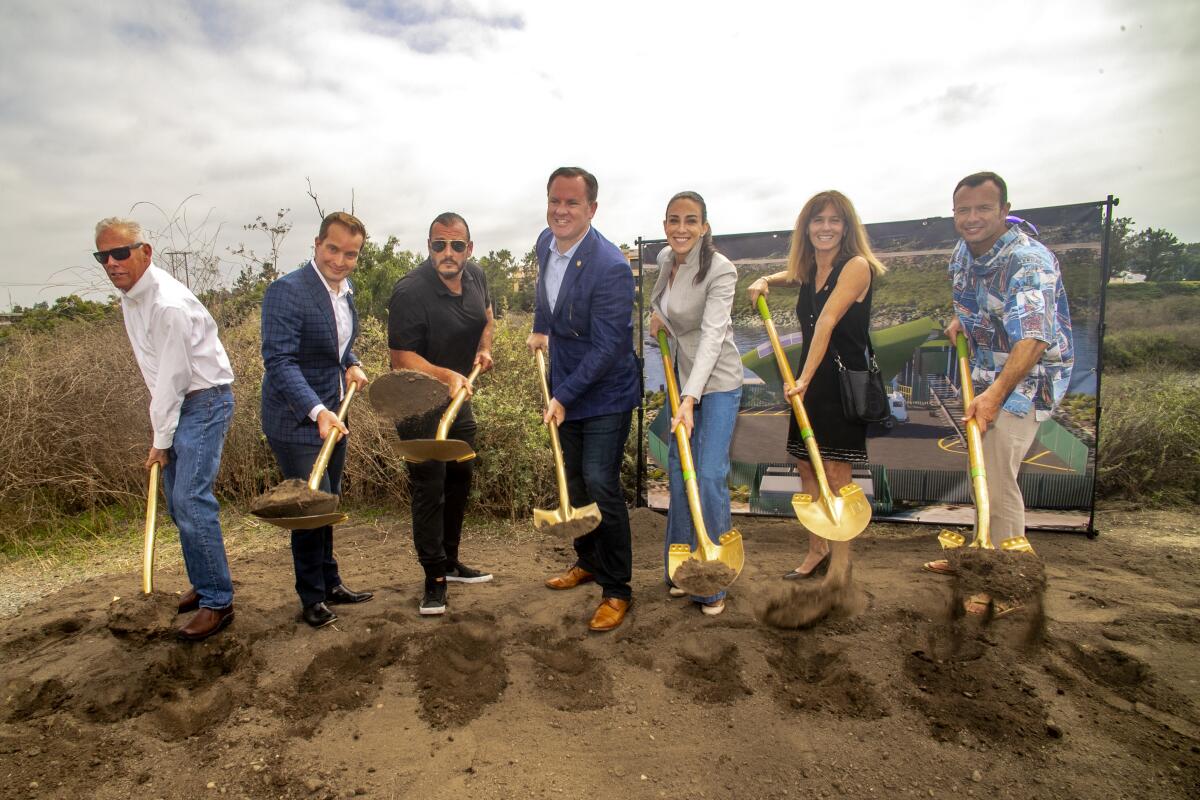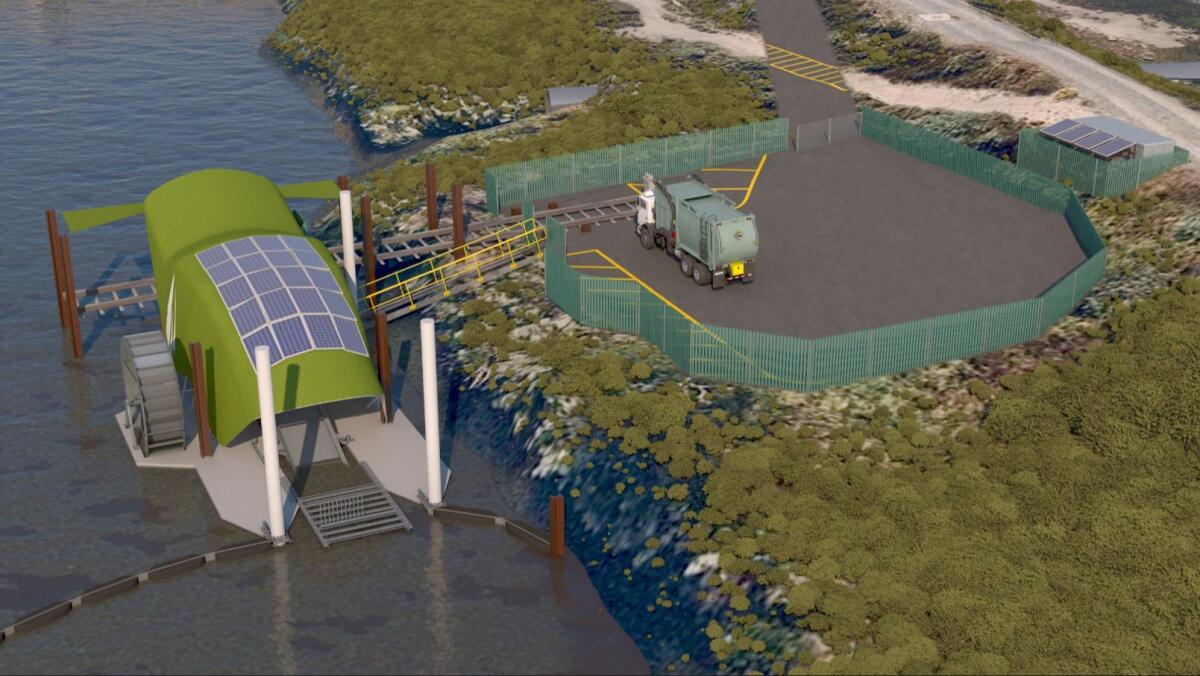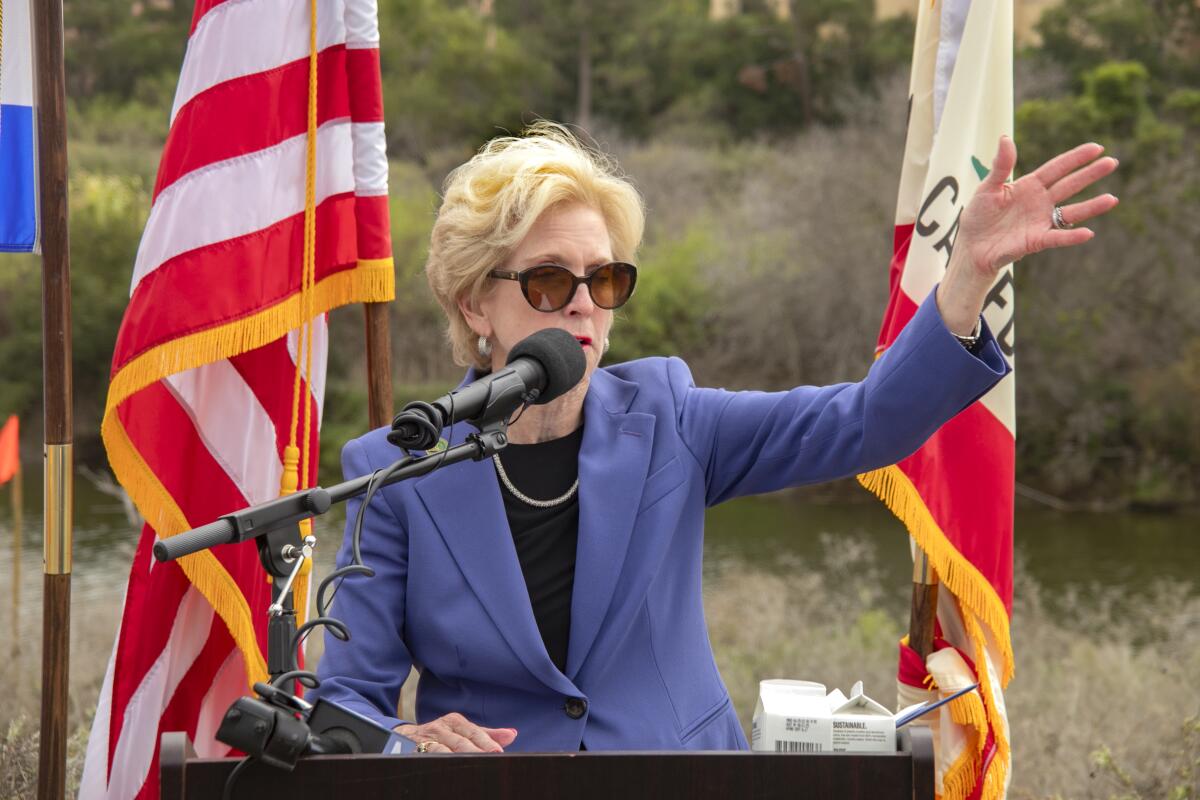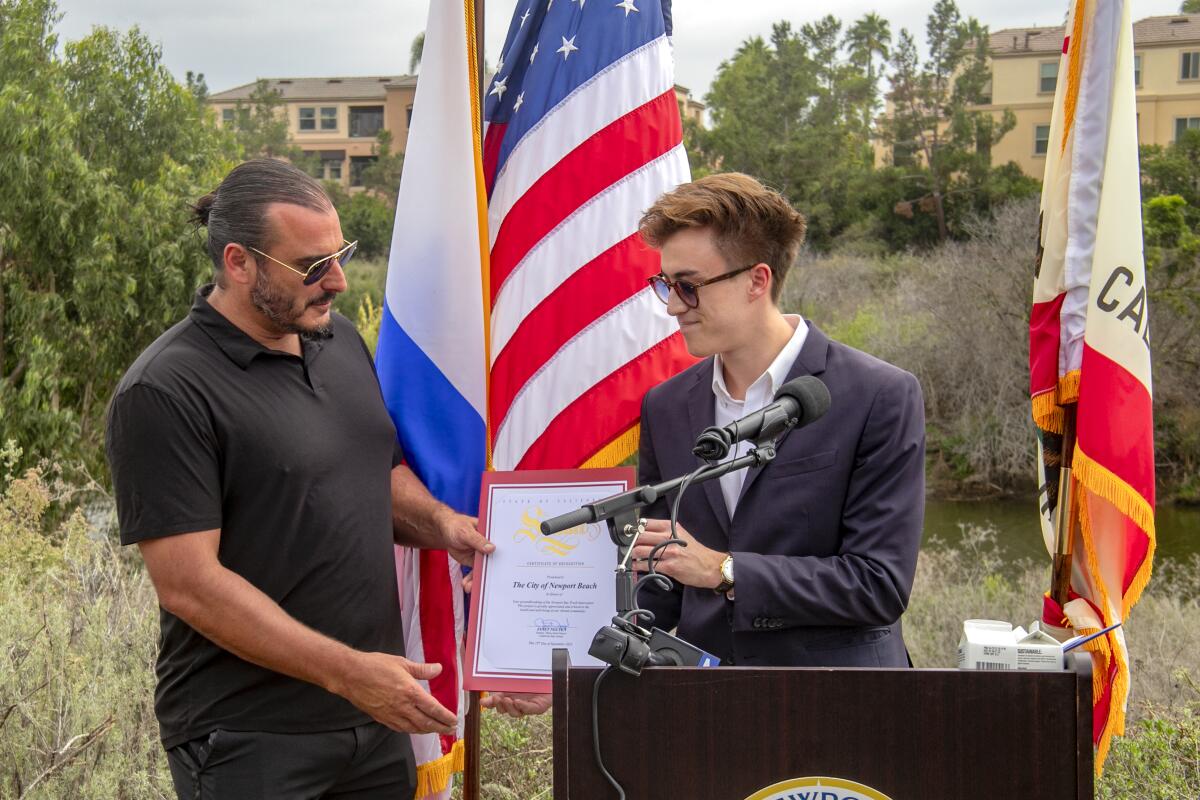Work on Newport Bay Trash Interceptor to begin as early as October

On what was an otherwise overcast Friday afternoon, the groundbreaking ceremony for the Newport Bay Trash Interceptor — a project that city officials noted has so far taken nine years of effort — was a bright spot on San Diego Creek.
The Newport Bay Trash Interceptor is a $5.5-million structure that aims to help clear the trash moving downstream from San Diego Creek before the water flows into Newport Bay. City staff estimates the amount of trash that flows down the creek and into Upper Newport Bay ranges from 100 to 500 tons a year.
With two booms that span the width of the creek, the interceptor will funnel trash onto a stationary barge mounted with a 17-foot-tall wheel. A conveyor belt will move the trash into two dumpsters mounted onto a fixed rail system that will then transport it onshore for disposal.
Public works director Dave Webb said this specific part of engineering makes the Newport Bay Trash Interceptor unique from ones in Los Angeles and from those in Baltimore, where the idea originated, because, due to site constraints, it does not make use of boats.

In July, the Newport Beach City Council approved a $4-million construction contract to Brea-based Jilk Heavy Construction.
Official talks for the “trash wheel” started in 2017, but former Newport Beach Councilwoman and current state Assemblywoman Diane Dixon noted that the conversation went back way before that in her remarks during Friday’s ceremony.
“When I was elected to the City Council in 2014, I was named chair of the Water Quality and Tidelands Committee and I said, ‘OK, what are we focused on?’ and it was really the Back Bay, the Upper Back Bay and water quality ... [Pat Fuscoe] was a member of the water quality committee when I was chair and one day, he brought in a picture of this water wheel in the city of Baltimore ... and he told me, told the committee, told staff, ‘We’ve got to get something like this. We have to look into this. This is very innovative,’” Dixon recalled.
Dixon said she was then succeeded by former Councilman Marshall “Duffy” Duffield, who helped bring the conversation to the dais in 2017.

“Never in my wildest dreams did I think that the water wheel project would follow me to Sacramento,” she joked. City officials credited Dixon and state Sen. Dave Min (D-Irvine) with securing the final $1.5 million needed to fund the Newport Bay Trash Interceptor. Both described support for the project as bipartisan.
“I’ve always believed in the synergy of technology and the environment. I think this particular project behind us, this trash interceptor, is an example of this union,” Min said. “To me, this is another step in ... the evolution of Orange County, and the beauty of our open spaces, to try and protect the beauty and integrity of our county with the Newport Bay Trash Interceptor.
“This $5.5-million investment is the first of its kind on the West Coast and represents not just a cool machine, cool technology, but really embodies our commitment to protecting the Upper Newport Bay Nature Preserve and preserving the surrounding waters, and I was so proud to be able to work with Assemblywoman Dixon to get that final $1.6 million to get this across the finish line.”
Min continued, “This isn’t about diverting a lot of trash. It’s about really embracing innovation to try and save our environment [and] to make sure our open spaces are going to be clean and preserved for generations to come.”
Webb confirmed Friday that construction is expected to begin as early as October, with the piles on which the floating platform will rest to be driven in by November. By mid-February, the hope is that the water inceptor, wheels and parts will be on-site to be assembled, commissioning the project by mid-July and hopefully completing the project before the following winter rainy season.

Newport Beach Mayor Noah Blom thanked state legislators and other agencies that contributed funds to the project by way of grants. About $1.7 million came from the California Ocean Protection Council; $1.6 million from the California Department of Water Resources; $500,000 from the Orange County Transportation Authority; and $12,000 from Help Your Harbor and the Surfrider Foundation.
The remainder — approximately $1.7 million — is being paid for by the city.
“We’ve done a great job over the years collecting, working to mitigate [the trash] and this is just going to further help that effort and maybe spurn it for many, many places, not just in California but across the country,” Blom said. “There’s nothing more important than protecting or preserving our natural resources.
“It is really cool to see out-of-the-box thinking, and I will really credit some of the early council members before my time, ... but [Duffield] and some of the others that really made this happen, and you know, found the project, brought it to staff — it shows it takes nine years to get something done. But if you put that kind of forethought on something, it’s great when it happens, and all of us get to sit here and marvel.”

All the latest on Orange County from Orange County.
Get our free TimesOC newsletter.
You may occasionally receive promotional content from the Daily Pilot.




